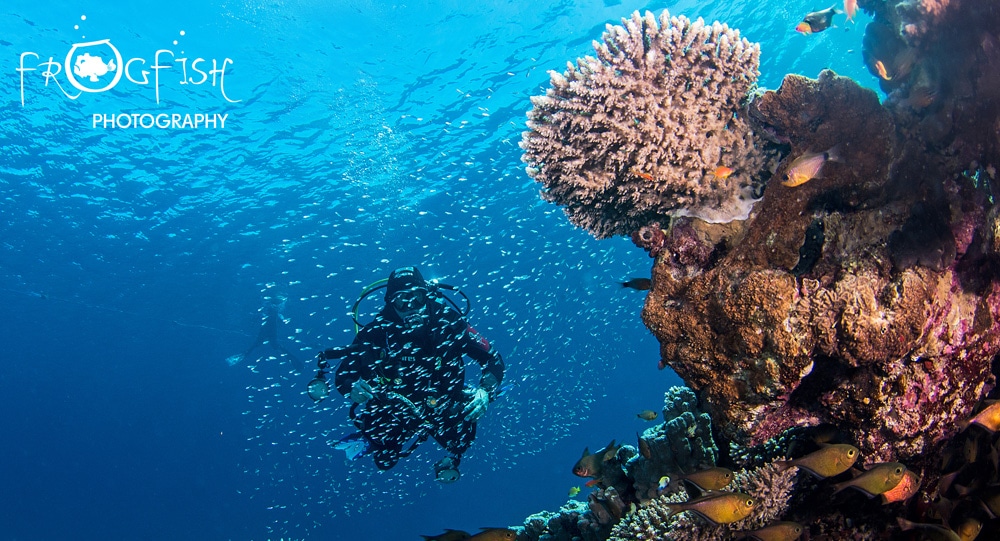News
Record 53 hour session in hyperbaric chamber saves diver’s life
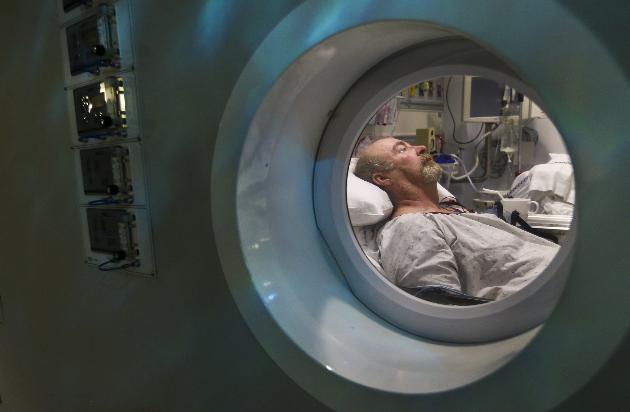
Thanks to some quick thinking by doctors and a handy US Navy Diving manual, a recent record breaking long-haul stay in a hyperbaric chamber saved the life of a Michigan diver…
“What I was worried about the most was holding my breath if I panicked,” said 64-year-old Begnoche, as holding your breath while ascending rapidly could cause a fatal lung embolism. “Panic is what really kills people.”
Last month Begnoche and other volunteers dived a shipwreck to capture footage off the coast of Grand Marais, Michigan. After he was pulled onto the boat, he started feeling prickly sensations in his body and he lost control of his arms and legs. His rapid ascent caused nitrogen bubbles to form in his bloodstream, cutting off blood to his spinal cord and other parts of his body.
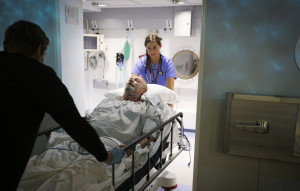 His decompression sickness was so severe that saving Begnoche required a helicopter rescue to Marquette, Michigan and then a low-altitude flight to Hennepin County Medical Center in Minneapolis, where doctors tried a rare treatment protocol which they found in the U.S. Navy’s Diving Manual.
His decompression sickness was so severe that saving Begnoche required a helicopter rescue to Marquette, Michigan and then a low-altitude flight to Hennepin County Medical Center in Minneapolis, where doctors tried a rare treatment protocol which they found in the U.S. Navy’s Diving Manual.
Along with a nurse, Begnoche spent a record 53 hours in HCMC’s hyperbaric chamber to give his body a chance to slowly clear out the damaging nitrogen bubbles.
“It’s really rare to have to do that protocol for a couple of reasons,” said Dr. Chris Logue, medical director of HCMC’s center for hyperbaric medicine. “One is that most people die. They never make it to treatment.”
Begnoche was like a “human soda bottle” that had been shaken up, Logue said, and caregivers needed to figure out how to deflate the bubbles.
Most of the time, HCMC’s hyperbaric chamber simulates a depth pressure of 45 feet to 60 feet below the surface and promotes healing by creating an oxygen-rich environment for patients suffering severe wounds or conditions such as anemia or carbon monoxide poisoning.
In this instance, Logue needed to simulate a depth of 165 feet — only 10 feet above the chamber’s maximum limit — to mimic Begnoche’s actual dive depth. That would drive the nitrogen in his body from bubbles into a solution and allow it to escape his body slowly and safely.
That’s what would have happened naturally if Begnoche ascended slowly from the lake as planned, with three or four decompression stops on the way to the surface.
Nurse Kimberlee Nerling, who was in the chamber with Begnoche the entire time, said she noticed immediate movement in the man’s arms when the chamber reached its maximum depth.
Begnoche has since regained control of his arms, and concerns about his lung functioning are over. But the semi-retired environmental manager and university lecturer can’t walk or move his legs yet.
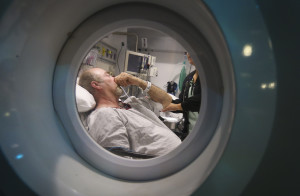 He is receiving additional daily treatments in the hyperbaric chamber in the hopes that they will stimulate healing and reduce inflammation in his spinal cord. Whether he will make a full recovery is, as yet, uncertain.
He is receiving additional daily treatments in the hyperbaric chamber in the hopes that they will stimulate healing and reduce inflammation in his spinal cord. Whether he will make a full recovery is, as yet, uncertain.
“It’s such a rare event, it’s impossible to tell,” Logue said. “What we’ve gained back, I’m thrilled about.”
Begnoche, who lives in Michigan, watched films during his two-plus days in the chamber. He struggled to sleep and replayed how the dive went wrong in his mind.
Loaded with underwater lighting and a video camera to examine the recently discovered Nelson, a three-masted schooner that sank off the coast of Grand Marais, Michigan in 1899, Begnoche had neglected to put on a weight that would have otherwise controlled his ascent. The project was part of his work with the Great Lakes Shipwreck Museum.
Given the amount of oxygen in his tank, he had only 20 minutes to spend by the ship. At 19 minutes, just to play it safe, he started to rise and pointed the video camera back down at the ship on the lake’s floor. That’s when he noticed how rapidly he rose past another diver.
With 40 years of experience and numerous deep-water dives, Begnoche knew he couldn’t stop his momentum.
“I was doing everything I could do to push any air out of the suit or any buoyancy devices that I had,” he said, but with the pressure decreasing and the gasses in his suit and his body expanding, it was “like a self-fulfilling prophecy.”
When he reached the surface, Begnoche immediately submerged a few feet to try to decompress and then returned to the boat when his oxygen tank was nearly empty. A Coast Guard helicopter was dispatched along with a boat.
Flying Begnoche to Minneapolis was complicated, because a high-altitude flight would have worsened his decompression sickness. So the pilot was ordered to keep the plane below 800 feet.
Having never spent more than three hours in the hyperbaric chamber before, nurse Nerling was in for an unusual shift. The 53 hours in the chamber was necessary for her as well. Bringing them out of a simulated depth of 165 feet any faster would have caused her to suffer decompression sickness.
So Nerling made sure her daughter could stay with her father and grabbed a textbook she needed to study for an upcoming nurse practitioner exam.
“It’s just me and you,” she told Begnoche in the chamber.
Once the air pressure in the chamber rose back to a simulated depth of 60 feet, additional caregivers were allowed in so that Nerling could rest.
Begnoche said he is grateful for the help he received in the lake, for the national Divers Alert Network that assessed his injuries and referred him to HCMC, and for the proximity of the hyperbaric chamber in Minneapolis.
He hopes that continued hyperbaric treatments along with physical therapy will help him regain strength, but he’s also worried. In the water, his expertise helped him focus and stay calm. In the hospital, he is burdened with the knowledge of just how devastating a rapid ascent can be to the body.
“It’s scary,” he said, “especially when you know what’s going on and what could have happened”
Source: www.startribune.com
Photos: Renee Jones Schneider
Gear News
Scubapro Free Octopus Promotion 2024

Free Octopus with every purchase of a SCUBAPRO regulator system
Just in time for the spring season, divers can save money with the FREE OCTOPUS SPRING PROMOTION! Until July 31st SCUBAPRO offers an Octopus for free
with every purchase of a regulator system!
Get a free S270 OCTOPUS with purchase of these combinations:
MK25 EVO or MK19 EVO with A700
MK25 EVO or MK19 EVO with S620Ti
MK25 EVO or MK19 EVO with D420
MK25 EVO Din mit S620Ti-X
Get a free R105 OCTOPUS with purchase of the following combinations:
MK25 EVO or MK19 EVO with G260
MK25 EVO or MK17 EVO with S600
SCUBAPRO offers a 30-year first owner warranty on all regulators, with a revision period of two years or 100 dives. All SCUBAPRO regulators are of course certified according to the new European test standard EN250-2014.
Available at participating SCUBAPRO dealers. Promotion may not be available in all regions. Find an authorized SCUBAPRO Dealer at scubapro.com.
More information available on www.scubapro.com.
Blogs
Northern Red Sea Reefs and Wrecks Trip Report, Part 3: The Mighty Thistlegorm
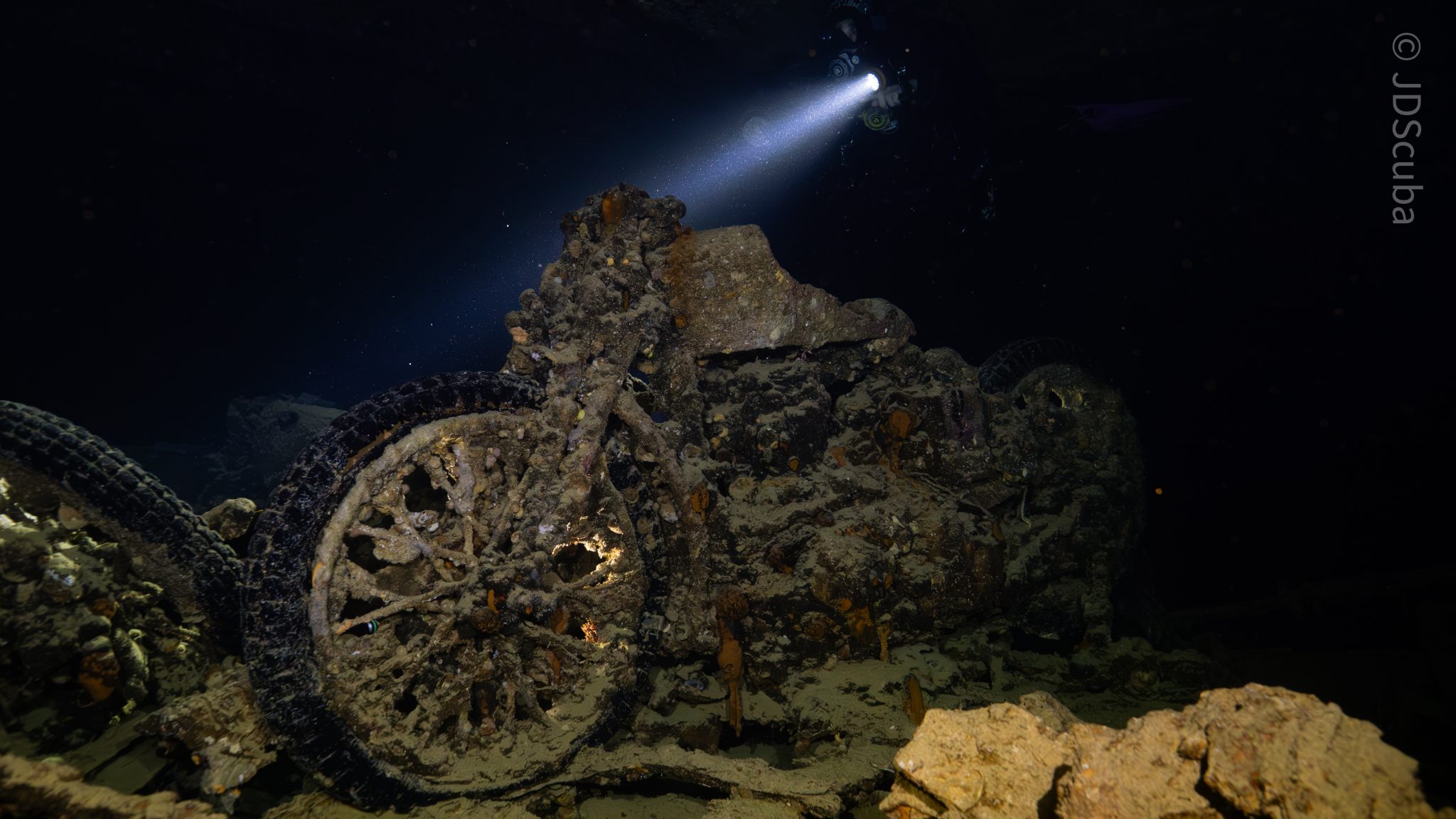
Jake Davies boards Ghazala Explorer for an unforgettable Red Sea diving experience…
Overnight, the wind picked up, making the planned morning dive a bit bumpy on the Zodiacs to the drop point on Thomas Reef. There, we would dive along the reef before descending through the canyon and then passing under the arch before ascending the wall with a gentle drift. The site provided great encounters with more pelagic species, including shoals of large barracuda, tuna, and bigeye trevally.
Once back on the boat, it was time to get everything tied down again as we would head back south. This time, with the wind behind us, heading to Ras Mohammed to dive Jackfish Alley for another great gentle drift wall dive before then heading up the coast towards the Gulf of Suez to moor up at the wreck of the Thistlegorm. This being the highlight wreck dive of the trip and for many onboard, including myself, it was the first time diving this iconic wreck. I had heard so much about the wreck from friends, and globally, this is a must on any diver’s list. Fortunately for us, there was only one other boat at the site, which was a rarity. A great briefing was delivered by Ahmed, who provided a detailed background about the wreck’s history along with all the required safety information as the currents and visibility at the site can be variable.
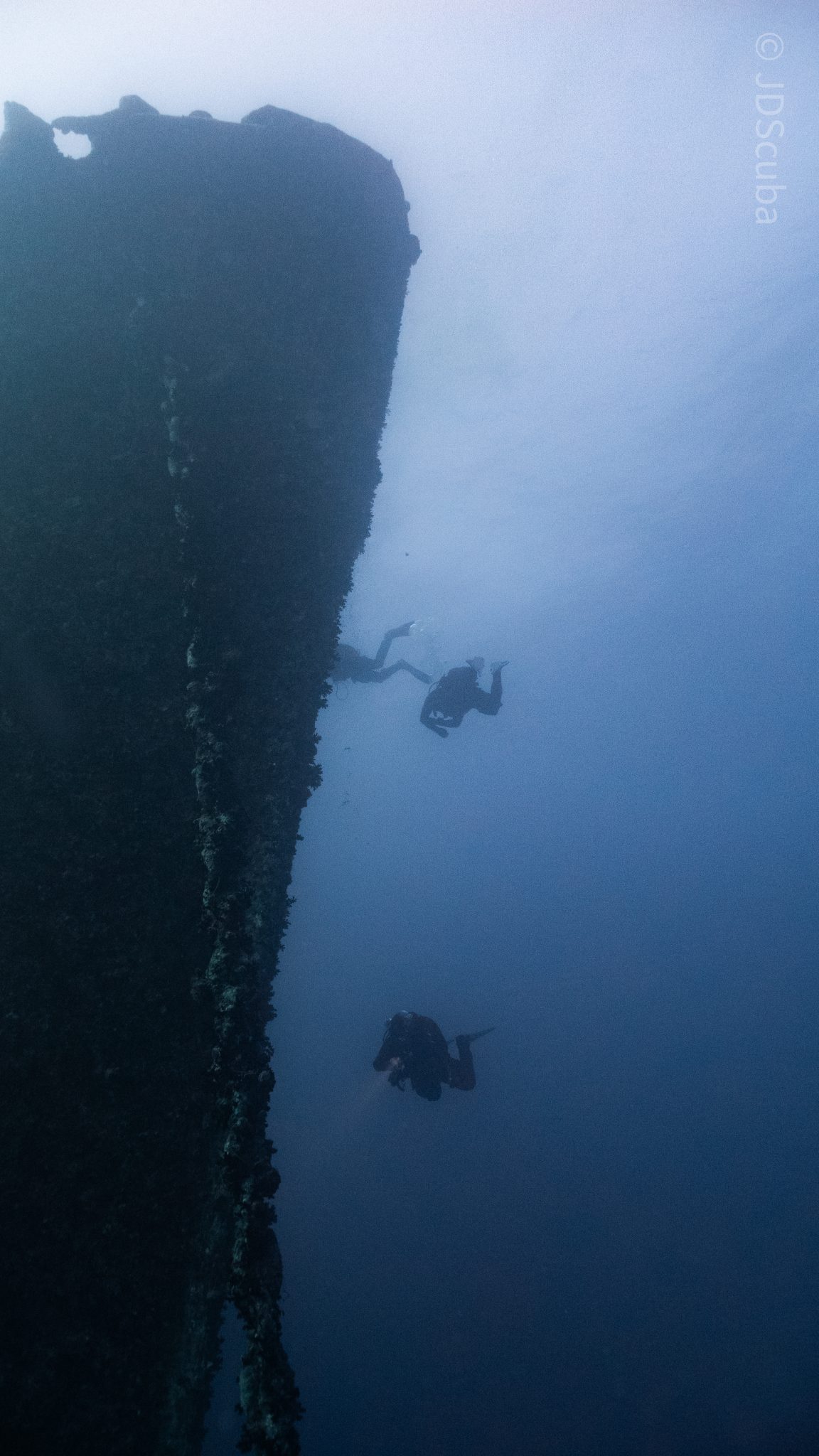
Kitting up, there was a lot of excitement on deck before entering the water and heading down the shoreline. Descending to the wreck, there was a light northerly current which reduced the visibility, making it feel more like the conditions that can be found off the Welsh coast. At 10m from the bottom, the outline of the wreck appeared as we reached the area of the wreck which had been bombed, as our mooring line was attached to part of the propeller shaft. Arriving on deck, instantly everywhere you looked there were many of the supplies which the ship was carrying, including Bren Carrier tanks and projectiles that instantly stood out.
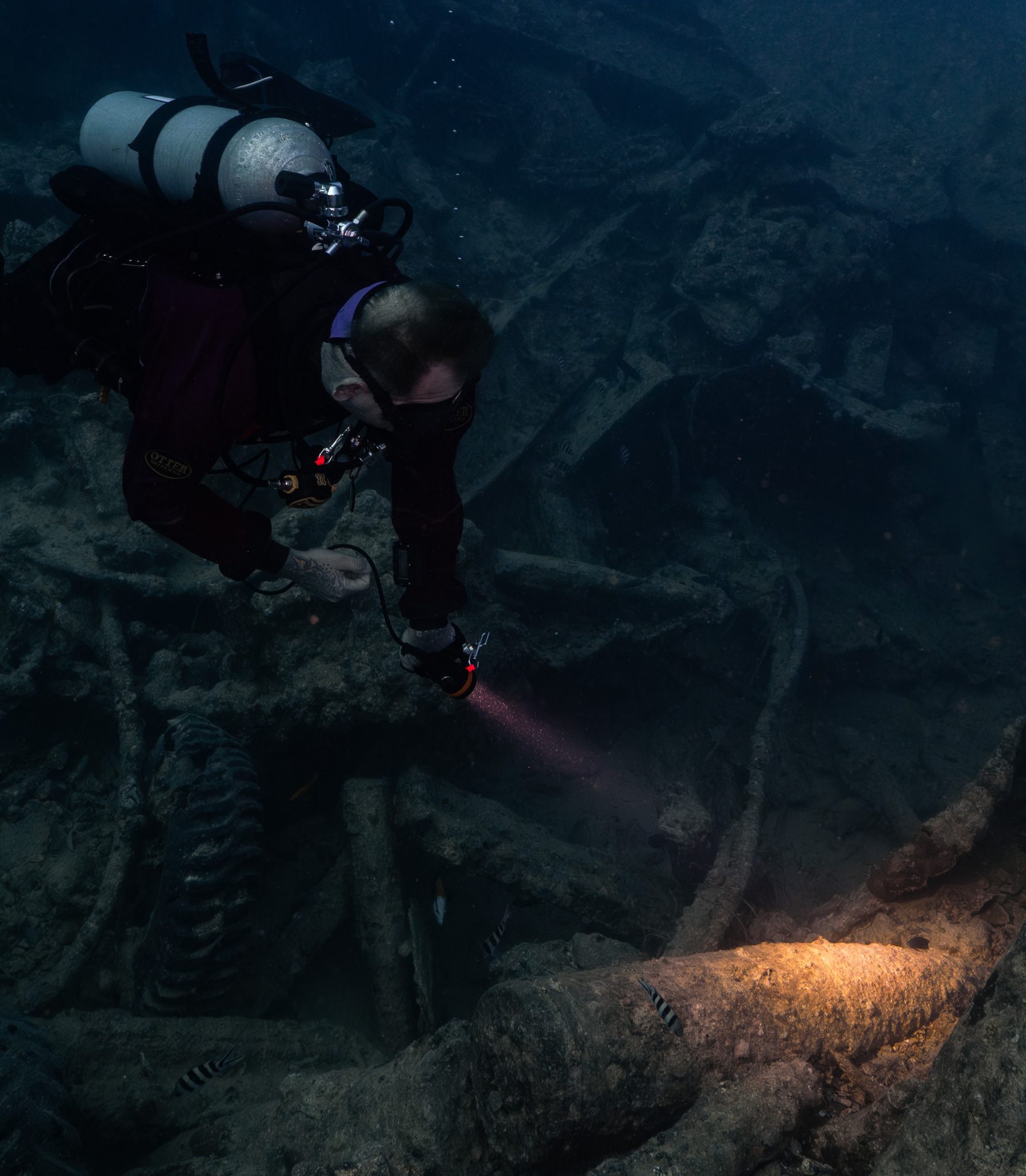
We headed around the exterior, taking a look at the large propeller and guns mounted on deck before entering the wreck on the port side to take a look in the holds. It was incredible to see all the trucks, Norton 16H, and BSA motorcycles still perfectly stacked within, providing a real snapshot in time.
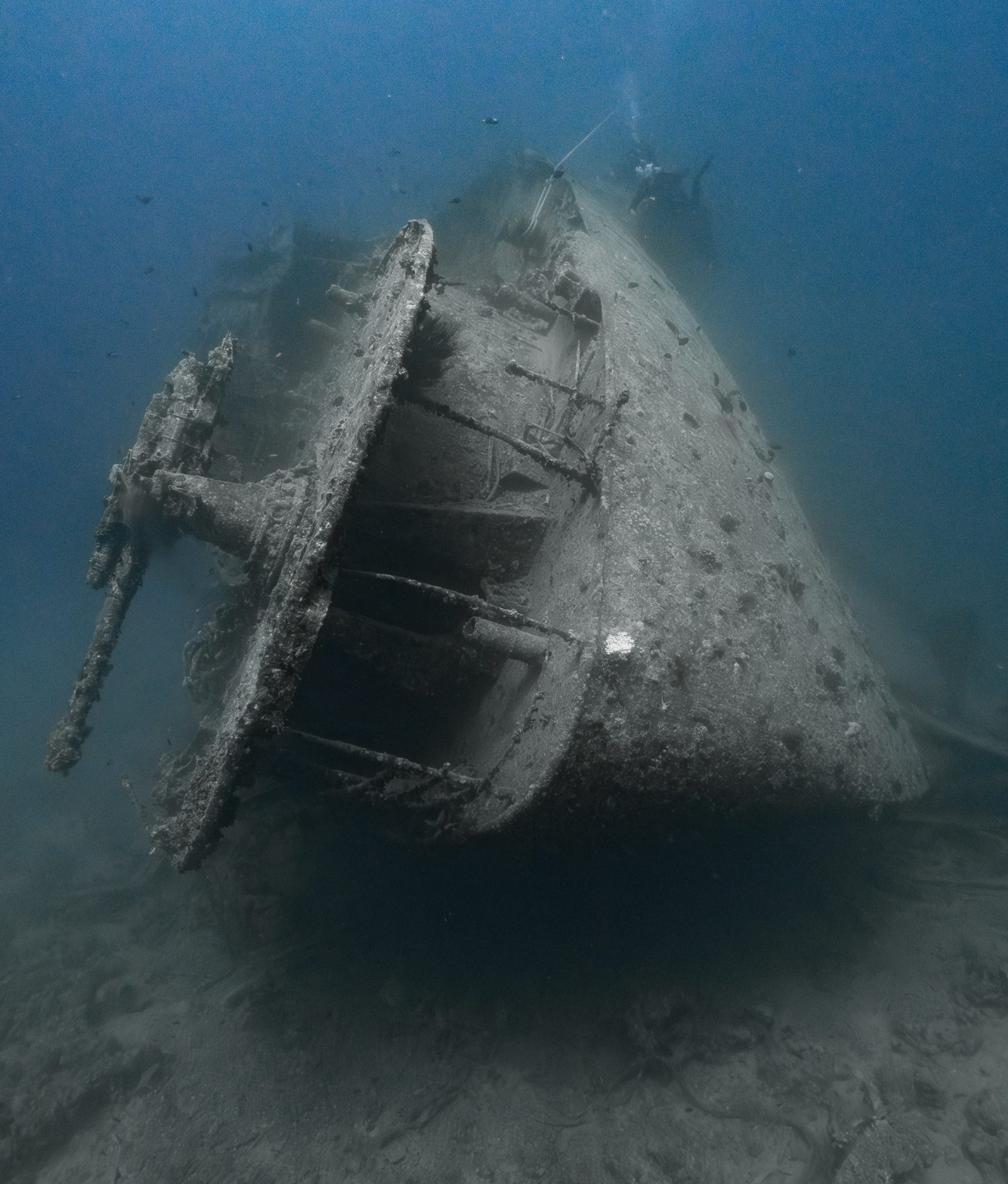
Overall, we had four dives on the Thistlegorm, where for all of the dives we were the only group in the water, and at times, there were just three of us on the whole wreck, which made it even more special, especially knowing that most days the wreck has hundreds of divers. Along with the history of the wreck, there was plenty of marine life on the wreck and around, from big green turtles to batfish, along with shoals of mackerel being hunted by trevally. Some unforgettable dives.

The final leg of the trip saw us cross back over the Suez Canal to the Gobal Islands where we planned to stay the night and do three dives at the Dolphin House for the potential of sharing the dive with dolphins. The site, which included a channel that was teeming with reef fish, especially large numbers of goatfish that swam in large shoals along the edge of the reef. These were nice relaxing dives to end the week. Unfortunately, the dolphins didn’t show up, which was okay as like all marine life they are difficult to predict and you can’t guarantee what’s going to be seen. With the last dive complete, we headed back to port for the final night where it was time to clean all the kit and pack before the departure flight the next day.
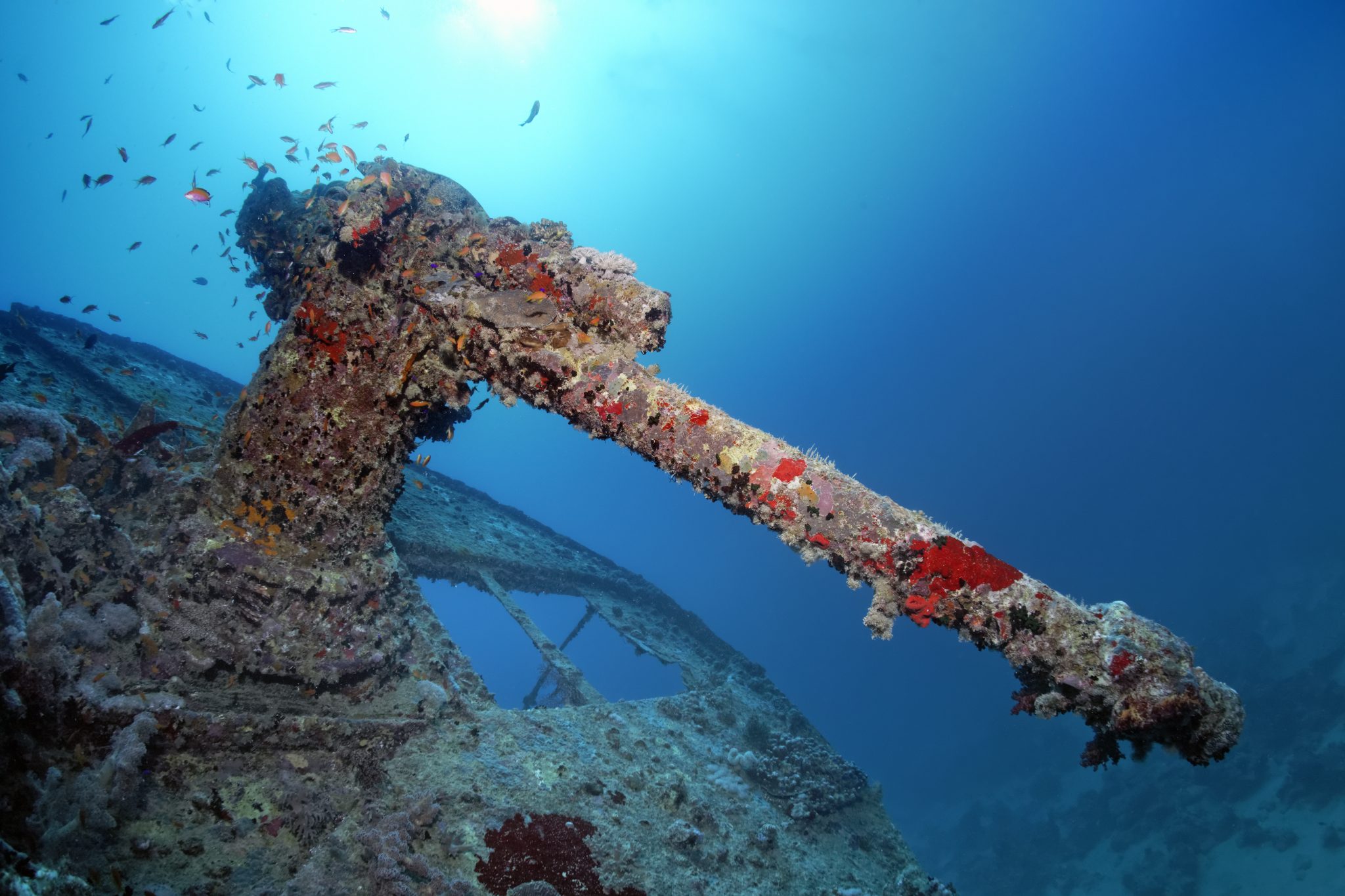
The whole week from start to finish on Ghazala Explorer was amazing; the boat had all the facilities you need for a comfortable week aboard. The crew were always there to help throughout the day and the chefs providing top quality food which was required after every dive. The itinerary providing some of the best diving with a nice mixture of wreck and reef dives. I would recommend the trip to anyone, whether it’s your first Red Sea liveaboard in the Red Sea or you’re revisiting. Hopefully, it’s not too long before I head back to explore more of the Red Sea onboard Ghazala Explorer.
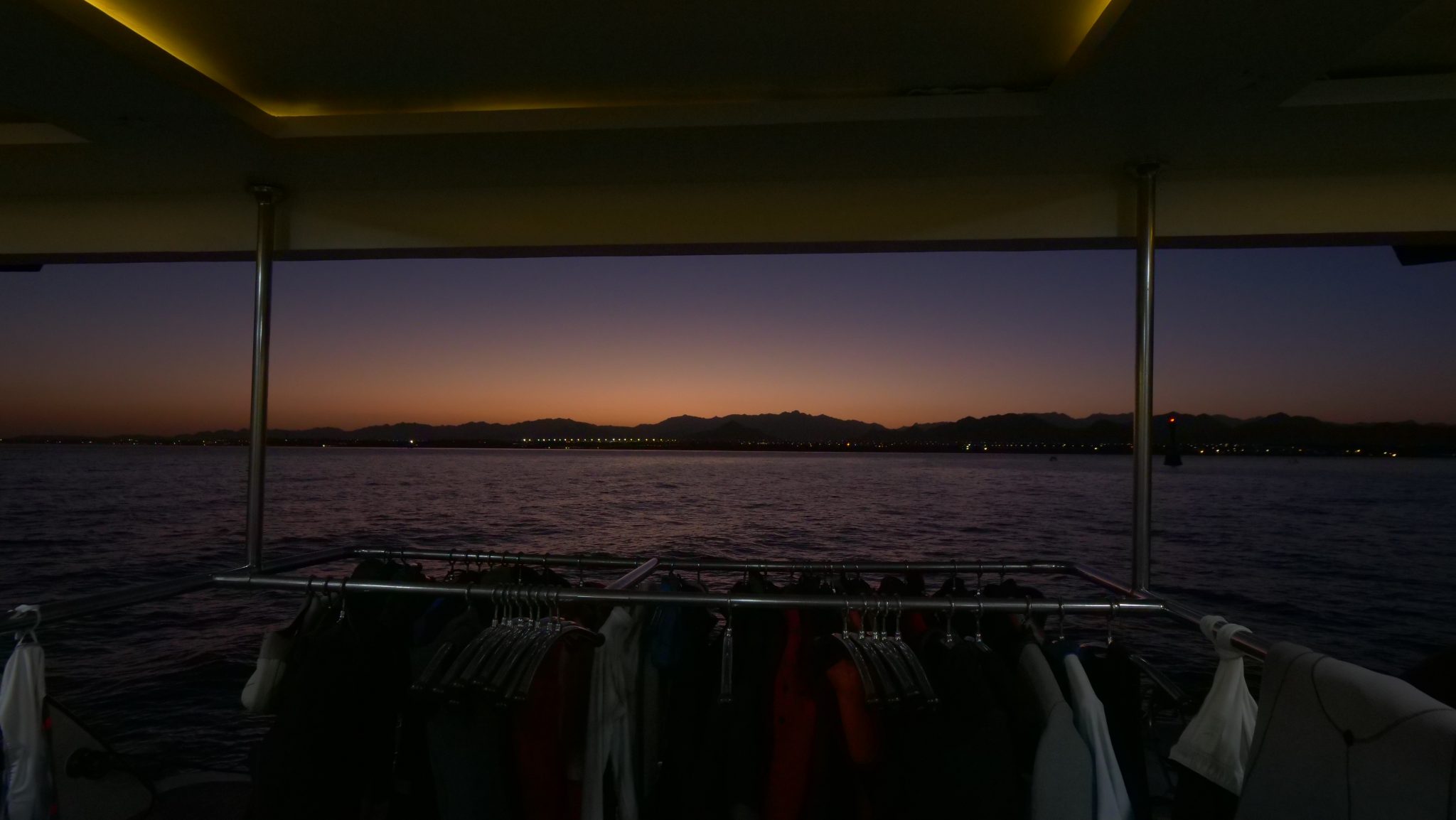
To find out more about the Northern Red Sea reef and wrecks itineraries aboard Ghazala Explorer, or to book, contact Scuba Travel now:
Email: dive@scubatravel.com
Tel: +44 (0)1483 411590
Photos: Jake Davies / Avalon.Red
-
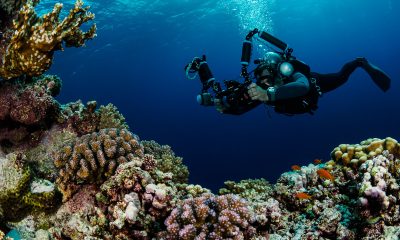
 News3 months ago
News3 months agoHone your underwater photography skills with Alphamarine Photography at Red Sea Diving Safari in March
-
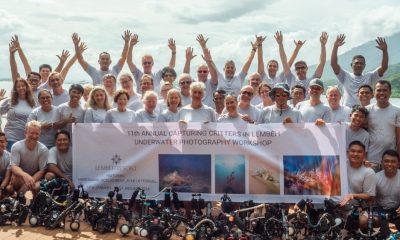
 News3 months ago
News3 months agoCapturing Critters in Lembeh Underwater Photography Workshop 2024: Event Roundup
-
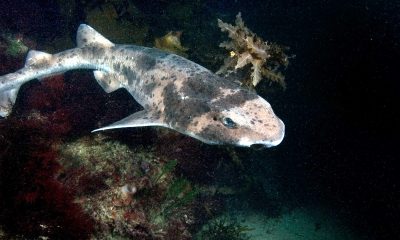
 Marine Life & Conservation Blogs2 months ago
Marine Life & Conservation Blogs2 months agoCreature Feature: Swell Sharks
-

 Blogs2 months ago
Blogs2 months agoMurex Resorts: Passport to Paradise!
-
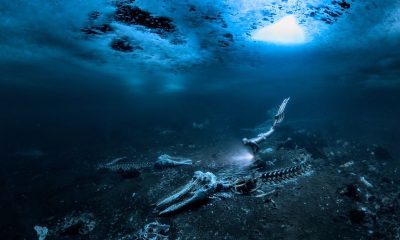
 Blogs2 months ago
Blogs2 months agoDiver Discovering Whale Skeletons Beneath Ice Judged World’s Best Underwater Photograph
-
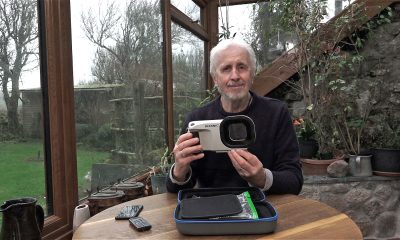
 Gear Reviews3 months ago
Gear Reviews3 months agoGear Review: Oceanic+ Dive Housing for iPhone
-
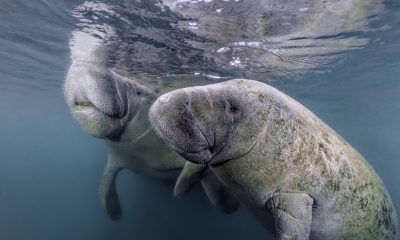
 Marine Life & Conservation2 months ago
Marine Life & Conservation2 months agoSave the Manatee Club launches brand new webcams at Silver Springs State Park, Florida
-
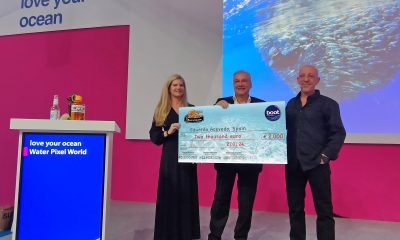
 News3 months ago
News3 months agoWorld’s Best Underwater Photographers Unveil Breathtaking Images at World Shootout 2023




